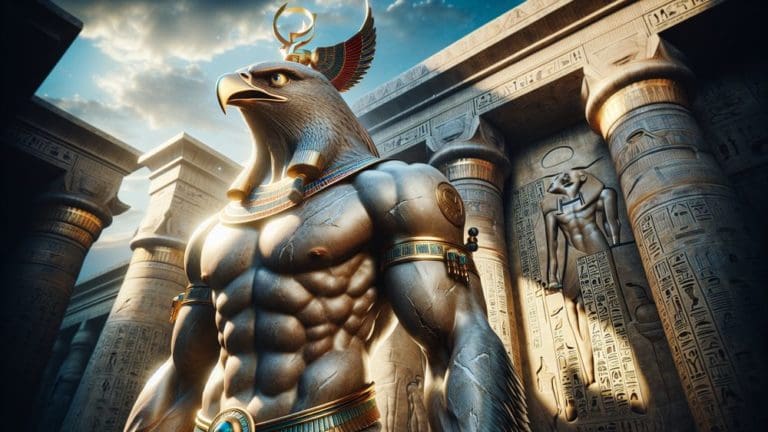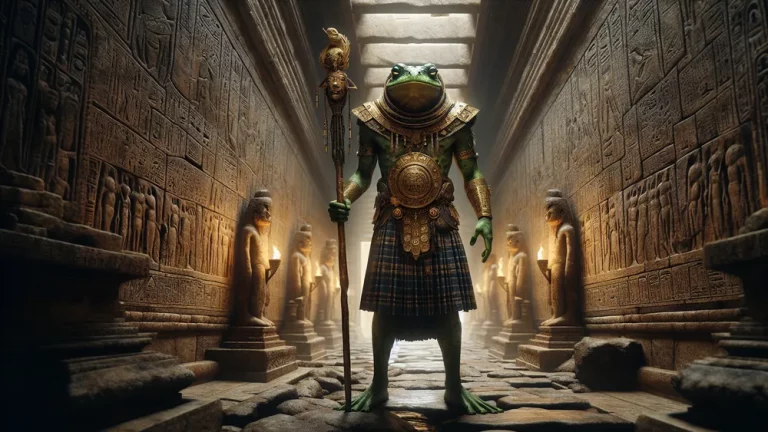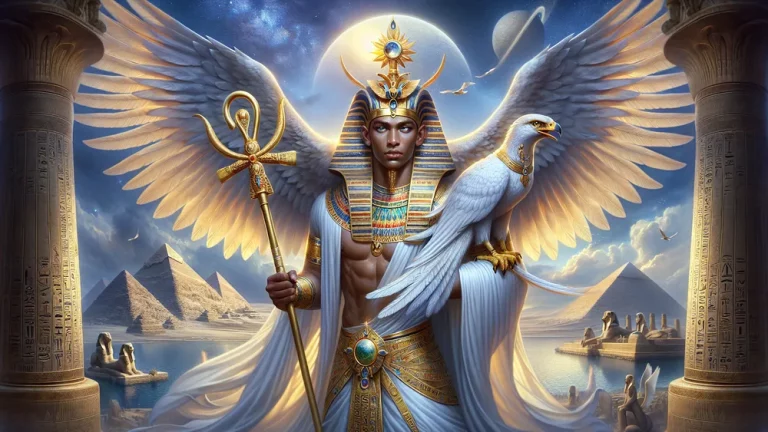Harpy In Greek Mythology: Roles, Features, And Symbolism
Inside the mix of Greek mythology, creatures work as strong symbols and parts of tales, and in all of these, the Harpies come out as very mysterious figures. When you look into the complex world of Harpies, it’s important to know them not just as mythical creatures, but also as symbols of some elemental and cultural ideas that were present in ancient Greece.
Key Points:
- Harpies are creatures with bird bodies and women’s faces, often linked to storms and punishment.
- Their name means snatchers or fast takers, rooted in the Greek word harpazō.
- Harpies are seen in myths as agents of punishment, like tormenting King Phineus.
- They symbolize chaos, sudden acts, and divine retribution in Greek stories.
- Harpies, Sirens, and Furies have different roles, each connected to divine punishment in myths.
- Beyond Greece, Harpies influenced Roman myths, becoming more fearsome.
- In ancient art, Harpies appeared on pottery and sculptures, showing their lasting impact.
The word “Harpies,” coming from terms meaning “grabbers” or “fast takers,” means their feared part in different mythical tales where they mostly appeared as agents of punishment or signs of storms. While myths about Harpies change – meaning differences by era and writer – common themes seem across the stories, showing them as hybrid beings with a bird’s body and woman’s face, a look that was both visually different and conceptually important.
In this exploration, you will see how these creatures fit into Greek mythology, affecting art, storytelling, and even later cultures beyond Greece. As we move through their roles, symbolic meanings, and looks, you will learn why Harpies were feared, respected, and remembered all through history.
Harpy: Overview and Key Facts
| Key Aspect | Details |
|---|---|
| Name Origin | From a Greek term “harpazō,” which means “to grab” or “to take.” |
| Role in Myths | Often seen as bringers of punishment, those who torment, and symbols of storm winds. |
| Physical Description | Said to have a bird’s body along with a woman’s head, showing a mix kind of being. |
| Variations in Mythology | There are various stories, sometimes they are beautiful women or feared monsters. |
| Symbolism | Stand for ideas like chaos, sudden violent acts, and punishment from the gods. |
| Earliest References | First mentioned in books such as Hesiod’s book called “Theogony” and some of Homer’s works. |
| Notable Appearances | We see them clearly in stories of Jason and the Argonauts, as well as the troubles of King Phineus. |
| Influence on Culture | They affected Roman myths and appeared in different versions in medieval and later European stories. |
| Artistic Depictions | Often, the images are of them on Greek pottery and art, usually flying or chasing. |
| Modern Interpretations | Even though they come from ancient times, their look and meaning still inspire books and art today. |
Discovering the Nature of Harpies in Greek Stories
Start a journey to find out how these interesting creatures are part of the stories of Greek mythology. Their beginnings, how they looked, the stories around them, and what they meant.
Word Origins and Beginnings of Harpies
In looking into the interesting word history of Harpies, you might find their name itself shows traits from long ago. It comes from the old Greek word “harpazō,” which means “snatchers” or “fast takers,” bringing up images of grabbing quickly. This naming forms the base for their first stories in myths, where they often meant fast actions and quick ends, like wind or storms suddenly breaking the calm.
How they began is mainly what early Greek writings talked about, placing them as daughters of Thaumas and Electra, as the poet Hesiod says, putting them in the family tree of mythical beings.
Still, there are different versions in some writings; there, they are nice beings with special jobs given by the gods, while in others, they appear as scary creatures. These stories have made Harpies known not only in Greek myths but also in the shared ideas of culture as parts of nature that are unpredictable and sometimes punishing.
Harpies, originally from Greek mythology as creatures called snatchers, have varied stories, sometimes seen as kind messengers from gods, other times as fierce beings, embodying unpredictable elements of nature.
How Harpies Look: Their Physical Appearance and Art
Harpies in Greek mythology are known for an interesting mix, where they are shown as creatures with parts of both birds and women. Found items from the past and stories often tell of them having the body and claws of a bird, like an eagle, together with the head and sometimes the chest of a woman.
These features mean they act as messengers and connectors between people and gods. In different art types, such as on pots or in wall paintings, Harpies appear as either very scary or full of grace and power. It depends on what the story or art is about.
With these features, they are like storm clouds: calming or scary, matching how they stand for both beauty and fear. As you look at Harpies in old art, there is change and difference in how they appear, showing cultural views and art styles changing over time.
Early on, they often look like scary beasts, focusing on bird traits like big claws and wings. But as art ideas grew, especially in the Hellenistic times, you might see Harpies with more human-like beauty, sometimes similar to Sirens. These changes tell us about how artistic looks and meanings shifted.
It shows how artists and storytellers were affected by the thoughts and ideas of their time. Whether seen as grim warnings or as grand mythical figures, Harpies made a strong place in Greek art, providing a look into how people like to see the divine and the frightening equally.

Harpies in Greek Tales
The fierce and mysterious nature of Harpies can clearly be seen in several old Greek tales. They often work as tools of punishment or as a way for gods to get back at humans. A well-known story is “Jason and the Argonauts,” where Harpies are shown as never-ending pests to King Phineus.
Phineus, who was blinded by Zeus, had to deal with the Harpies’ anger every time he tried to eat; they came down from the sky, taking food from him, and ruining what was left. This kind of punishment, a good example of mythological fairness, means the Harpies act as the hands of heavenly power, much like when stories today use nature to correct wrongs.
How the story is solved, with hero Jason helping Phineus by stopping the Harpies’ attacks, highlights the legendary focus on bravery and divine help. In another story about Harpies found in Homer’s “Odyssey,” while not the central stars, Harpies are the wild and unpredictable parts of nature. In this epic, they go with strong winds and quick gusts, making pictures of crazy weather messing up people’s plans.

This fits with a theme in Greek myths where Harpies, like the changeable gods’ fancies, stood for the unknown and shifting things heroes had to handle. These stories, by showing Harpies and heroes meeting, mirror how people and gods, and nature are mixed together, showing Greeks thought life was a set of challenges from outside forces that can’t be controlled.
Beyond that, Harpies are often mentioned in ancient writings, as they are both mythical creatures and strong signs of storms. Besides what’s in “The Argonautica” by Apollonius of Rhodes and other old books, Harpies often come before bad times in various local myths. These stories mostly tell of them living in lonely or empty areas, coming out to bring trouble or to do gods’ bidding of punishment. Here’s a short look at these stories and where Harpies are important:
- Jason and the Argonauts: Harpies cause trouble for King Phineus.
- The Odyssey: Harpies mean nature’s random changes.
- The Harpies at Thrace: In some stories, Harpies live on the Strophades Islands and also act by grabbing and wrecking.
The role of Harpies in these tales highlights their many sides and lasting effect in the wide world of Greek myths.
What Harpies Stand For
In Greek mythology’s world, Harpies include various symbolic meanings, and they often act as examples of wild natural forces and godly revenge. They are linked to storm winds, which means they move fast and disrupt things, similar to sudden wind gusts that mean unexpected problems.
To the people back then, who lived with weather’s strong changes affecting all their daily routines and farming, Harpies were both fierce and changeable powers of the wind. It was like tools used by gods to make their plans happen.
In myths, their role as tormentors connects them more with punishment and wrongdoings, as they seem to punish people like King Phineus for their wrongs. This way, Harpies are like old ideas about punishment, and the forces that bring fairness when people or gods’ rules are broken.
Here’s a simple layout in table form that helps identify different meanings connected to Harpies across Greek tales:

| Symbolism | Description and Interpretation |
|---|---|
| Storm Winds | Means nature can be unexpected, aligning with weather patterns. |
| Punishment | Tools of godly revenge, for punishing wrongdoers. |
| Agents of Justice | That are examples of balance being given through payback. |
| Omens | They appear as signs of bad things or forces that mean negative events. |
These symbolic meanings appear to show how the old Greeks used Harpies to make bigger thoughts about fairness, nature, and keeping balance in the universe clear. Through their roles as forces that both destroy and fix things, Harpies helped those old societies to understand and make sense of many uncontrollable happenings that changed their lives.
Harpies and Their Place Among Other Mythical Beings
While exploring stories in Greek mythology, we look at how the symbolic roles of Harpies meet and match with other creatures such as Sirens and Furies. They are interesting.
Comparing Harpies with Sirens and Furies
When you look into the group of Greek mythical beings, Harpies, Sirens, and Furies give an interesting look at both their opposites and their similarities. Each one carries unique themes in the myths. Known for bird-like features, Harpies seem linked with storms and are often those who act as divine punishers.
But Sirens, with bodies of birds and human heads, have their songs that sailors can’t resist, meaning danger through charm rather than outright harm. With Sirens on rocky coasts, the use of their enticing song seems to be a trap, suggesting a form of threat different from the forceful ways of Harpies.
Adding to this is Furies, known as Erinyes, which bring another kind of payback, but in a way that’s specifically targeted. These are ones who chase anyone committing big family wrongs, meaning revenge and regret. Typically feared for their relentless nature, Furies are which is different from the unpredictable actions of Harpies. This offers a deeper look into what ancient Greeks thought about moral fairness.

Harpies’ Influence Beyond Greece
Harpies are known for their importance in Greek stories, and they left marks on myths in other cultures, which means the shared flexibility of myth ideas across lands. Harpies in stories from Rome kept their roles as wind spirits and punishers like in Greece, yet they often appeared with more harmful features, turning into frightening beings. It is remarkable.
This change is similar to how a tale shifts when told by various cultures, holding onto key parts but adding local twists. As for parallels, these can be seen with the stories of Valkyries from Norse myths, who though different in their roots and roles, also stand between being divine messengers and bringers of fate.
These comparisons across different groups point out the widespread interest and changeable nature of myth figures, which reflect common human ideas of payback and the sides of stories about gods affecting life on Earth.
Harpies in Roman tales became scarier compared to their Greek origins, highlighting how myths transform and carry shared ideas when passed between cultures.
Ancient Artistic Takes on Harpies
In ancient Greek art, Harpies often appear in things like pottery, sculpture, and paintings because people were interested in these mythical creatures. Many Greek vases show Harpies with their usual mix – women’s faces and parts of birds like bodies and claws – highlighting their mix of holy and scary. A bit like how superheroes in comics today mix people and magic to seem strong and mysterious.

Ancient artists also made sculptures of Harpies in temples and stone coffins; they are sometimes seen taking souls to the next world, which means their job is between humans and gods. No matter the form, these pictures show the lasting effect and creative ways people thought about Harpies in the old world, meaning their place in hard myth and ideas people had back then.
All the Myths and Creatures of the Greek Pantheon
A great example of rich storytelling is the Greek group of gods, a large collection of gods, demigods, heroes, and strange creatures, each with their unique tales mixed into a whole story.
Like the different characters in Marvel or DC tales, where each one adds to a bigger story, Greek myths give a complex blend made up of tales about revenge, love, fights, and lessons. The powerful titans, curious sirens, and scary Harpies. These stories, changing and growing through the years, mean something about how ancient societies thought and felt.
For those who want to understand more about this interesting area, see the Greek Creatures and Monsters list. This list gives a full look at who these beings are in Greek tales, an entrance into seeing their lasting fascination and importance.
FAQs
1. What are the most famous myths involving Harpies?
The most famous myths involving Harpies include their role in the legend of the Argonauts and their torment of King Phineus, where they are portrayed as malicious creatures that snatch food.
2. How did ancient Greeks perceive Harpies?
Ancient Greeks perceived Harpies as fearsome entities often associated with storms and serving as agents of divine punishment.
3. Are Harpies unique to Greek mythology?
Harpies are indeed not unique to Greek mythology, as similar creatures have appeared in Roman mythology and various other cultural tales.
4. What lessons or morals do the stories of Harpies impart?
The lessons or morals imparted by the stories of Harpies often revolve around the consequences of excessive greed or hubris, serving as a symbol of divine retribution and the importance of respecting natural boundaries.







